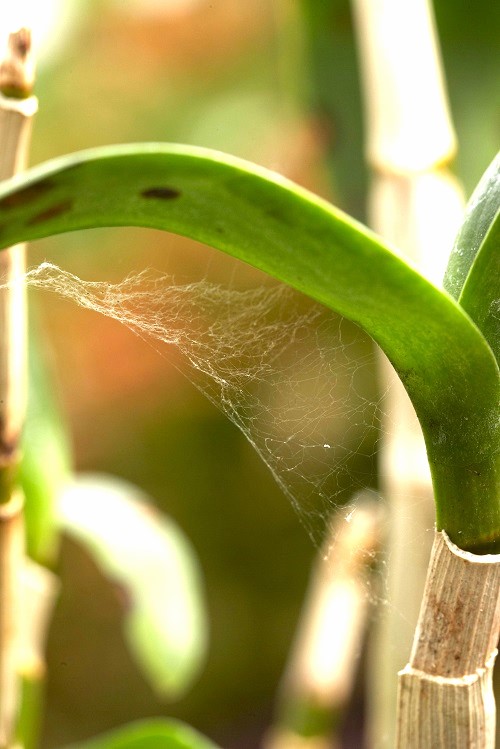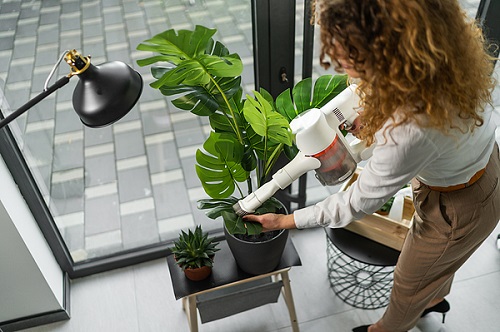Here are 23 best ways to Get Rid of Spider Mites on Indoor Plants easily without too much efforts! Keep on reading!

Is your indoor plants’ lush foliage turning yellow and lackluster no matter what you do? You might be under siege from an invisible enemy—spider mites! These microscopic arachnids can wreak havoc on your beloved plants, turning your green oasis into a battleground. But don’t lose hope! Here are the top ways to Get Rid of Spider Mites on Indoor Plants!
Here are the best ways to get rid of aphids
Best Ways to Get Rid of Spider Mites on Indoor Plants
1. Suffocate Them with Insecticidal Soap Solution

Blend a mild insecticidal soap with water and spray it on the affected plant. Ensure you cover both the upper and lower leaf surfaces. This soap disrupts the mites’ cell membranes, effectively suffocating them.
2. Essential Oils
Create a homemade spider mite spray by mixing a few drops of essential oils like rosemary, peppermint, or clove with water and a bit of mild liquid soap. These oils have natural pesticidal properties and can help deter spider mites.
3. Garlic and Onion Spray
Blend garlic and onion cloves with water to create a potent spray. Strain the mixture and dilute it before applying it to your plants. Both garlic and onions are natural repellents for spider mites.
4. Sticky Traps
Place yellow sticky traps near your infested plants. Spider mites are attracted to the color yellow and will stick to these traps when they come into contact with them.
Broccoli Spider Mites Problem: Reasons and Solutions
5. Vacuum Cleaning
Use a handheld vacuum cleaner with a small nozzle attachment to gently vacuum the affected plant’s leaves. Be careful not to damage the plant while doing so. Empty the vacuum bag immediately to dispose of the mites.
6. High-Quality Soil
Start with high-quality potting soil that is free from contaminants. Clean soil reduces the chances of introducing spider mites to your indoor garden.
7. Hydrogen Peroxide Solution
Dilute hydrogen peroxide (3%) with water (1:3 ratio, 3 parts water) and use it as a soil drench. This can kill mites and their eggs in the soil.
8. Diatomaceous Earth
Sprinkle food-grade diatomaceous earth on the soil’s surface. This natural substance contains microscopic particles that can puncture the bodies of spider mites, effectively eliminating them.
9. Alcohol Wipe
Gently wipe the leaves with rubbing alcohol-dampened cotton pads or swabs. This is particularly effective for smaller infestations.
Check out the Best Pest Repellent Plants here
10. Aloe Vera Spray
Blend aloe vera gel in water and spray the combination on your plants. Aloe vera has natural insect-repelling properties and can deter spider mites.
11. Use a Hand Lens
Invest in a hand lens or a magnifying glass to closely inspect your plants. Early detection can help you manage spider mite issues before they become severe.
12. Baking Soda Dust
Dust your plant’s leaves with a thin layer of baking soda. This can disrupt the mites’ feeding and slow down their reproductive cycle.
13. Early Detection is Key

Regularly inspect your indoor plants for any signs of spider mite infestations. Look for stippling (tiny white or yellow dots on leaves), fine webbing, and leaves with a dusty appearance.
14. Isolate Infested Plants
If you detect spider mites on one plant, isolate it from others immediately. This prevents the infestation from spreading to healthier plants.
Check Out Our Article on Getting Rid of Carpenter Bees here
15. Gentle Shower Bath
Take your infested plant to the shower and give it a gentle rinse with lukewarm water. This will dislodge many spider mites and their webs.
16. Homemade Spider Mite Spray
Create a homemade spray by mixing one part rubbing alcohol with two parts water. Spray this solution on the affected plant, focusing on the undersides of leaves where spider mites tend to hide. Do not forget to test this on a smaller area first.
17. Neem Oil Treatment
Neem oil is an effective natural remedy for spider mites. Dilute neem oil in water according to the instructions on the product and spray it on your plants. This disrupts the pests’ feeding and reproduction.
18. Pruning Infested Leaves
Remove severely infested leaves to prevent the mites from spreading further. Be sure to dispose of these leaves in sealed plastic bags.
How to Use Banana Peels to Get Rid of Aphids
19. Maintain Proper Humidity
Spider mites thrive in dry conditions. Increase humidity around your plants by misting them regularly or using a humidity tray. This can deter spider mite infestations.
20. Rotate Plants
Periodically move your indoor plants to different locations. This disrupts spider mites’ ability to locate and infest new hosts.
21. Regular Cleaning
Keep your indoor gardening area clean and free of debris. Spider mites can hide in fallen leaves and soil, so regular cleaning can help prevent infestations.
22. Quarantine New Additions
When adding new plants to your indoor garden, quarantine them for a few weeks to ensure they are not carrying any hidden spider mite colonies.
How to Get Rid of Whiteflies on Plants | 14 Ways to Kill Whiteflies
23. Consistent Monitoring

Even after treating an infestation, continue to monitor your plants for any resurgence of spider mites. Early intervention is crucial for preventing a re-infestation.






